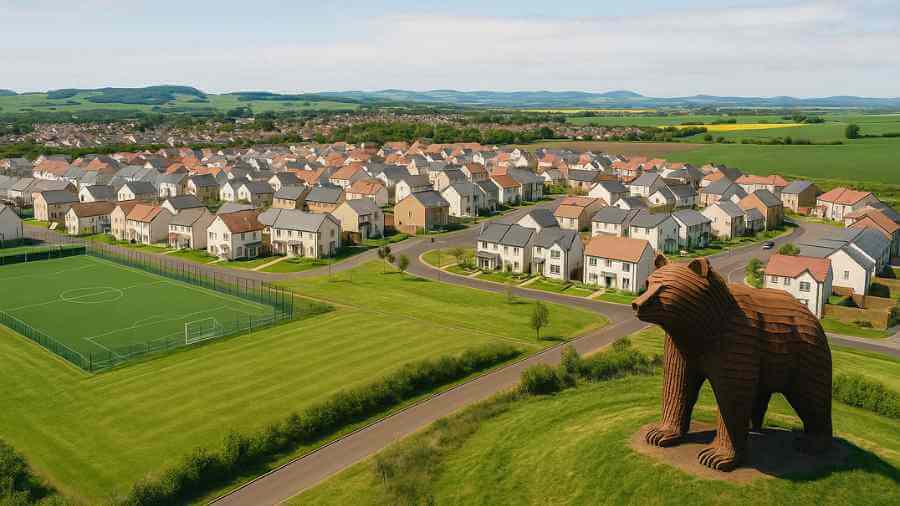Hallhill Dunbar: A Growing Community Shaping the Future of East Lothian

The name Hallhill Dunbar has become increasingly recognised across East Lothian and beyond, symbolising one of Scotland’s most notable examples of long-term community-focused development. Positioned on the southern side of Dunbar, this area has evolved significantly over the past two decades. What began as a strategic housing and infrastructure plan has now transformed into a dynamic, mixed-use neighbourhood offering homes, schools, shared green spaces, sports facilities and opportunities for economic and social growth.
The development of Hallhill Dunbar is more than a construction project; it is a reshaping of community life. It reflects how thoughtful planning, sustainable land use and inclusive design can positively influence the identity and daily experiences of local residents.
The Vision Behind Hallhill Dunbar
Hallhill Dunbar was conceived as a long-term development with the aim of supporting the expanding population of Dunbar, improving local infrastructure and enhancing overall quality of life. Instead of simply creating a housing estate, the project focused on building a liveable, integrated community where residents could access essential amenities, education, recreation and nature within walking distance.
This approach aligns with modern urban development principles that prioritise sustainability, community wellbeing and reduced dependency on car travel. Hallhill’s planners looked to enhance Dunbar not by replacing its heritage and character, but by complementing it. The result is an area that blends familiar small-town warmth with the convenience of modern facilities.
Residential Growth and Housing Diversity
A key aspect of Hallhill Dunbar’s expansion is its contribution to local housing availability. The development includes a mixture of private housing, affordable homes and properties designed for families, singles and older individuals. This diversity ensures that different community groups can find suitable places to live without being priced out or pushed to less accessible areas.
Many homes in Hallhill offer contemporary design, energy-efficient features and access to shared spaces, reflecting Scotland’s ongoing commitment to lower-carbon living. The placement of housing clusters around community touchpoints has also encouraged social connections among neighbours, helping new residents settle into the area more naturally.
Schooling and Educational Development
Education sits at the heart of Hallhill Dunbar’s community structure. New and improved school facilities have played a central role in supporting local families and encouraging younger generations to flourish. The proximity of schools to residential neighbourhoods also allows pupils to walk or cycle to lessons, promoting healthier lifestyles and reducing reliance on road transport.
Schools in the Hallhill area are known for fostering a strong sense of belonging, with local clubs, community programmes and outdoor learning opportunities contributing to children’s development. This educational infrastructure has been a major attraction for families considering a move to Dunbar.
The Significance of Hallhill Sports Centre
One of the most well-known landmarks within Hallhill Dunbar is the Hallhill Sports Centre, a vibrant and widely appreciated recreational hub. The sports centre supports a variety of local clubs and offers facilities for football, rugby, athletics, hockey and fitness training. It has become a backbone of community health, encouraging participation in sport for people of all ages and abilities.
The sports centre is not simply a gym or a field; it is a shared meeting space. Clubs host events, families gather to watch matches and local groups use it as a base for social engagement. This strengthens community identity and gives residents a sense of shared pride and involvement.
The Dunbar Bear and Cultural Identity
A striking feature associated with Hallhill Dunbar is the prominent bear sculpture located nearby. Often referred to as The Dunbear, the sculpture serves as a visual symbol of Dunbar’s heritage and forward-looking spirit. Public art of this kind adds character to a setting and encourages residents and visitors alike to connect emotionally with the place.
The sculpture reflects a growing appreciation for cultural identity within community planning. Hallhill Dunbar is not only a place to live or work; it is a place with personality and meaning.
Preserving and Enhancing Natural Spaces
While modern development is essential, the Hallhill Dunbar planners understood that nature must remain central to healthy living. Community woodlands, walking paths and carefully protected green corridors run throughout the area, allowing wildlife to thrive and residents to enjoy the outdoors.
These natural spaces encourage relaxation, exercise and mindful living. For young families, they represent safe areas to play. For older residents, they provide gentle walking routes and quiet spaces for reflection. For the environment, they help maintain biodiversity, reduce pollution and promote ecological balance.
Economic and Social Benefits to Dunbar
As Hallhill has expanded, so too have opportunities. Local businesses have benefitted from increased footfall, new shops and services have emerged, and employment opportunities have grown. The presence of community facilities attracts people from other towns, strengthening Dunbar’s regional significance.
Socially, Hallhill Dunbar has contributed to the sense of unity within Dunbar as a whole. Events, sports, clubs and public spaces have given residents places to connect, share experiences and build friendships. Many newcomers to the area comment on how welcoming and community-driven the atmosphere feels.
Future Development and Long-Term Potential
Hallhill Dunbar continues to evolve. Plans for additional homes, facilities and green spaces reflect a commitment to ongoing improvement rather than rushed completion. The focus remains on thoughtful planning, community benefit and ensuring that Dunbar remains a desirable and supportive place to live for years to come.
The future may include enhanced transport resources, expanded school capacity, new cultural installations and further investment in environmentally sustainable building practices. What is clear is that Hallhill Dunbar is envisioned as a lasting asset to the region rather than a temporary development project.
Challenges and Community Engagement
Like any large-scale development, Hallhill Dunbar has faced questions and discussions regarding traffic impact, school capacity and balancing rural character with urban growth. Community engagement has been essential in addressing these concerns. Local voices and town planning consultations have helped shape decisions and ensure that Hallhill supports Dunbar rather than overwhelms it.
Open communication has been a key element of the project’s success. When residents feel heard, they feel ownership. That sense of ownership is part of what gives Hallhill Dunbar its strong community identity today.
Conclusion
Hallhill Dunbar stands as a powerful example of how thoughtful planning and community-centred development can transform a town for the better. By combining housing, education, sport, nature, cultural identity and economic opportunity, Hallhill has strengthened the social and environmental framework of Dunbar. It is not simply a housing development; it is a living, evolving community shaped by the people who call it home.
Its future remains full of potential, guided by the same principles that shaped its foundation: sustainability, inclusion, connection and wellbeing.



